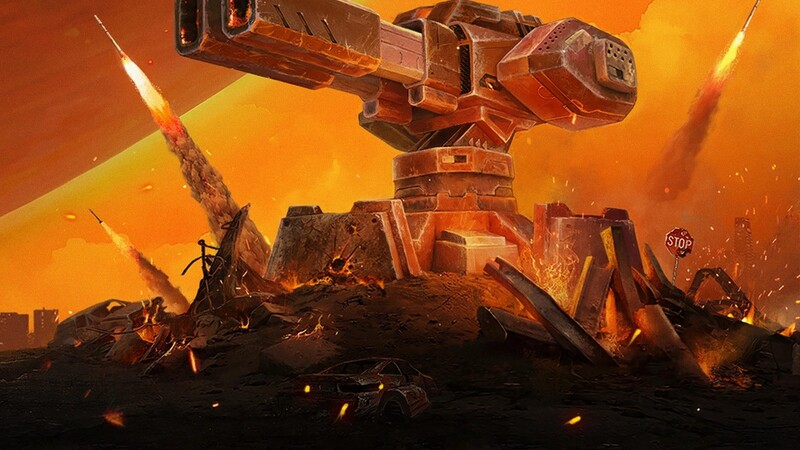Virtual reality has been steadily carving out a niche for strategy and tower defense fans. IRON GUARD: Salvation takes things to another level. Developed by Xlab Digital for Meta Quest 3, it merges real-time strategy with immersive VR design, giving players not only a sense of tactical control but also the thrill of standing on the battlefield itself. From expertly crafted environments to a finely tuned difficulty curve, this title delivers an experience that both newcomers and veterans can enjoy. What struck me most was how every detail, from the stunning visuals to the steady challenge, pulled me deeper into its desperate fight for survival. Thus, making IRON Guard: Salvation one of the most engaging VR strategy games I’ve played on the Meta Quest 3.
Developer & Publisher // Xlab Digital
Platforms // Meta Quest, SteamVR
MSRP & Release Date // $17.99, August 28, 2025
Reviewed On // Meta Quest 3
The Story of Humanity’s Last Stand
At the heart of IRON GUARD: Salvation lies a battle for survival on a cosmic scale. Humanity stands on the brink of annihilation, besieged by an endless army of machines determined to wipe out the last vestiges of civilization. As commander, you aren’t just building towers. You’re in charge of the desperate defense of humanity’s final strongholds. The story wastes no time plunging you into the chaos. Across 30 levels set on different planets and the mysterious world of Akris, the campaign consistently frames each mission as another desperate front in a galaxy-wide war.
During my playthrough, I felt the weight of command in every mission. Knowing that each decision shaped not just my defenses but the fate of the people behind them gave the battles a real sense of urgency. It wasn’t just about placing towers; it felt like I was standing on the front lines of humanity’s darkest hour. Sometimes, my commands weren’t correct, and I failed a mission or two as a result. Then I tried different ideas on the restart, then blew those robots away. The mission where the first boss walked out and started heading toward my base was my favorite at this point. That mission, which I had failed twice at first, allowed me to realize just how important I decided to save mankind.
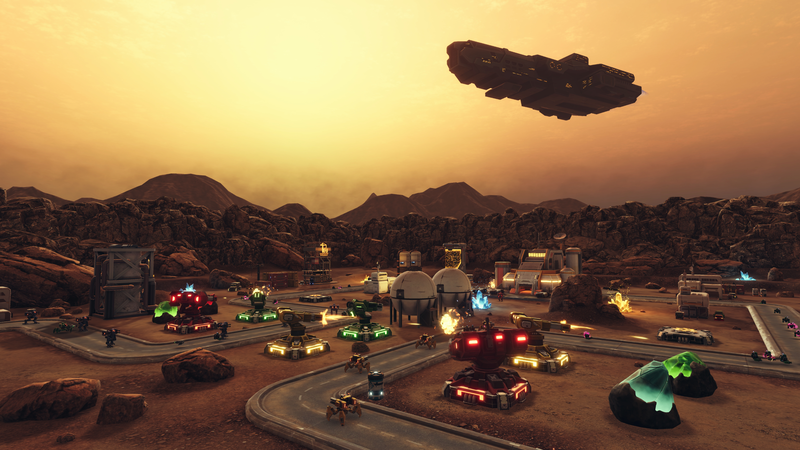
Gameplay That Never Lets Up
At its core, IRON GUARD: Salvation is a tower defense game infused with real-time strategy mechanics. You’re tasked with building powerful defensive structures, upgrading them strategically, and deploying units to repel relentless robotic enemies swarming your base. The battles are fast-paced and intense, with enemy forces constantly adapting their tactics. No two encounters ever felt identical, as I had to adjust my strategy mid-battle to counter different types of robotic assaults. I’d have regular turrets set up at first. Then I would realize they were grouped up, so I needed to make sure to have rocket turrets to help.
One of my failed missions was the first one that had a big boss, because I had been using the same strategy, and then I realized that I needed to adapt on the fly. Each enemy type pushes you to think differently, demanding both quick reflexes and careful long-term planning. One of the most exciting aspects of VR is the ability to command the battlefield from above like a strategist, or shrink yourself into the action and experience the fight at scale. I switched between these views often, and both perspectives added to the sense of immersion and tactical variety.
The difficulty curve is another standout. The challenge ramps up steadily, avoiding jarring spikes and keeping the experience engaging without feeling unfair. For players who want more control, multiple difficulty settings allow you to fine-tune how intense you want the action to get. That said, the game does feel limited in terms of modes. The core campaign is strong and well-designed, but I could see players craving more variation beyond its primary offering.
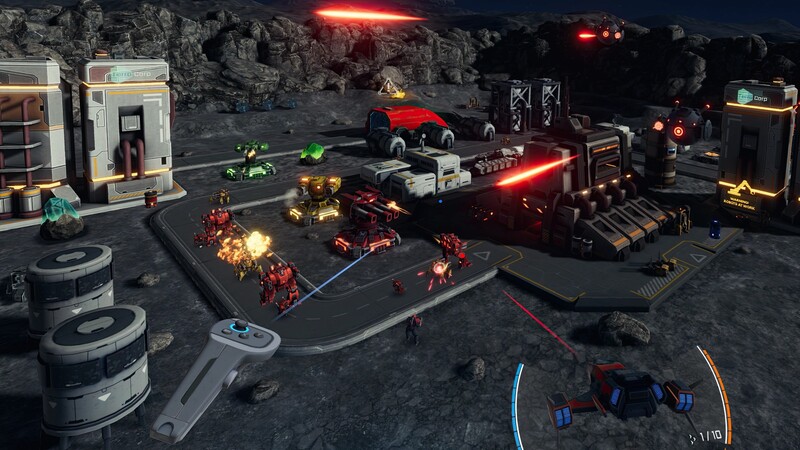
Tools of Survival: Drones, Resources, and Firepower
What elevates IRON GUARD: Salvation beyond traditional tower defense is the extra layer of interactivity and resource strategy. The most unique system is the right-hand controller drone, which acts as a personal weapon you can manually fire to cut down enemies slipping through your defenses. Early on, I relied on it as an emergency fallback, but with upgrades, it evolved into a semi-autonomous ally, auto-firing at enemies while still letting me take control when things got hectic. It’s a brilliant mechanic that keeps you active in the fight while rewarding investment into progression. Resource management also plays a critical role.
Collecting minerals with harvesters, building factories, and keeping production optimized provided a steady stream of supplies to expand my defenses. Combined with the sheer variety of options like the 25+ turret types, movable platforms, drones, different exploding barrels, and devastating superweapons, every mission felt like a fresh opportunity to refine my strategy. Together, these tools gave me a sense of both micro and macro control. Of course, manually intervening when needed while also managing the larger flow of the battlefield. It’s this balance that makes IRON Guard: Salvation feel like so much more than a standard tower defense title.
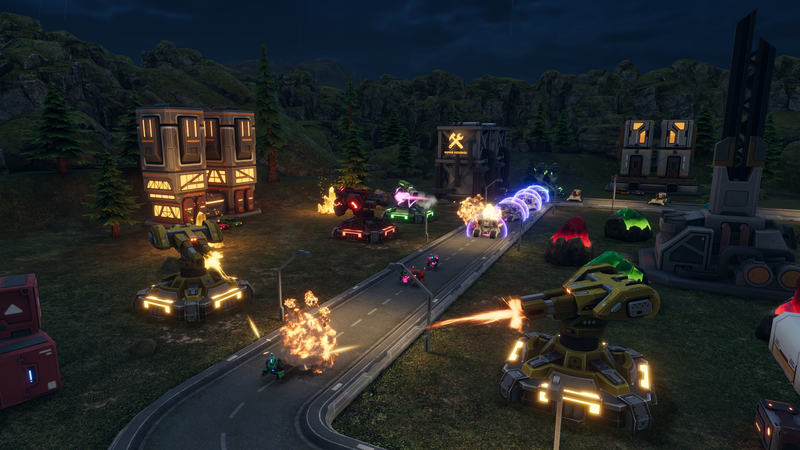
Heroes and Commanders in the Fight
While this isn’t a character-driven RPG, the heroes and commanders in IRON GUARD: Salvation play a crucial role in shaping each battle. They aren’t just flashy additions. They actually come with unique abilities and devastating superweapons that can completely shift the flow of combat when timed correctly. My personal favorite is Grave’s super weapon, which was some type of laser strikes. Several times, enemies were just speeding toward my base, then boom, I dropped Grave’s laser strikes on them to buy me time. What impressed me most was how they meshed seamlessly with the larger strategy.
Turrets and resource management form the backbone of your defenses. But heroes add a dynamic, human element to the fight. Triggering a commander’s ability at just the right moment felt immensely satisfying, especially when it turned the tide against a particularly relentless enemy wave. They also provide a sense of identity and flair. Their distinct designs and personalities break up the mechanical focus of the robotic enemies, reminding you that this war isn’t just about structures and weapons — it’s about the people leading the charge.
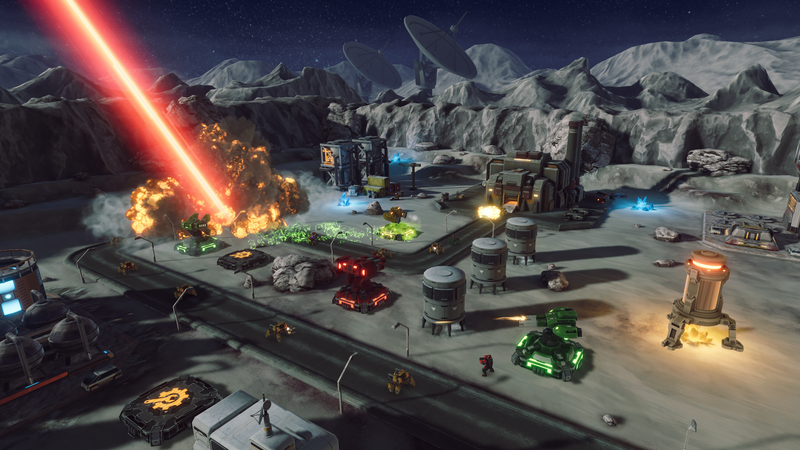
A Galaxy Built With Care
One of the most impressive aspects of IRON GUARD: Salvation is how stunning it looks on Meta Quest 3. From the moment you step into the battlefield, the attention to detail is apparent. The structures, environments, and heroes are modeled with exceptional care. Vast planetary backdrops and the hauntingly beautiful world of Akris make every level feel distinct. Meanwhile, the robotic enemies are menacing, diverse, and full of character, each designed to test your skills in unique ways. It’s clear that Xlab Digital poured an incredible amount of time and care into every model and environment. Their craftsmanship ensures that every structure, turret, and enemy design feels purposeful, resulting in a battlefield that doesn’t just look great, it feels alive.
Evolving Through the Skill Tree
One of the most rewarding parts of IRON GUARD: Salvation is its skill tree progression system. After each mission, you’re awarded points based on performance, and those points feed directly into unlocking upgrades that matter. The skill tree allows you to invest in turret enhancements, hero upgrades, new tools, and devastating superweapons. Every choice feels significant. You can lean into raw firepower by maxing out turret damage, or diversify by empowering heroes and unlocking powerful battlefield abilities.
What I loved most was how much freedom it gave me to adapt my strategy. After tough missions, I often rethought where to invest points. Maybe boost the drone to cover weak spots or unlock stronger harvester skills to keep resources flowing. Each decision shaped my approach in future battles, making victories feel earned and tailored to my playstyle. Each upgrade felt like it would be important in a certain situation, or also provide different forms of defense for your playstyle. The skill tree ensures that IRON Guard: Salvation doesn’t just rely on moment-to-moment tactics. It ties your long-term performance and decisions into meaningful progression, adding depth and replayability without ever feeling grindy.
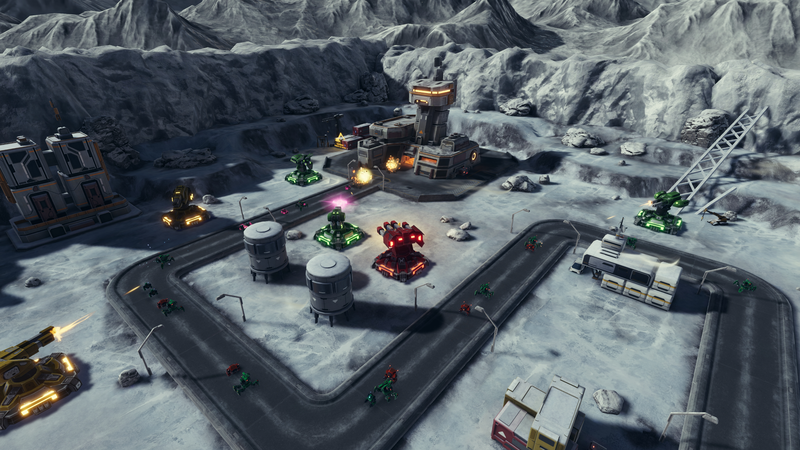
Immersive Soundscapes
The sound design complements the action beautifully. Mechanical roars of enemies, the hum of energy-powered towers, and booming explosions surround you, pulling you deeper into the fight. The music builds tension during enemy waves and relaxes during brief lulls, striking a balance that enhances both strategy and atmosphere.
Performance That Holds the Line
On Meta Quest 3, IRON GUARD: Salvation runs impressively smooth. During my playthrough, the framerate held steady almost the entire time. Only once did the game briefly drop frames for a split second, but it was a minor hiccup in an otherwise seamless experience. Performance in VR can make or break immersion, and here it’s clear that the developers optimized the game well. Even in hectic moments when enemies swarm and towers fire on all cylinders, the game stays responsive and stable.
I will note there weren’t any options I saw to help with VR motion sickness. However, I personally didn’t experience any VR motion sickness while playing, which is always a welcome relief in VR titles that rely on long, intense sessions.
Accessibility in the Trenches
Accessibility is becoming a key factor in modern gaming, but IRON GUARD: Salvation doesn’t offer much beyond its range of difficulty modes. On the plus side, those difficulty settings do a lot of heavy lifting, letting players of varying skill levels enjoy the experience. Whether you want a relaxed tactical challenge or an intense, high-stakes defense scenario, you have those options. That said, players who rely on broader accessibility tools will likely find the feature set limited. For me personally, this didn’t impact my enjoyment or ability to play comfortably, but it’s something worth noting for those who need more robust options. The VR interface itself is intuitive, with controls mapped cleanly to Meta Quest 3’s hardware. Newcomers to tower defense or VR won’t feel overwhelmed, while veterans can quickly dive into advanced strategies.
Final Verdict: A Call to Arms in VR
IRON GUARD: Salvation is more than just another VR tower defense game. It’s a desperate stand against extinction, brought to life with breathtaking visuals, finely tuned strategy, and the raw immersion of Meta Quest 3. Every wave of enemies feels like part of a larger war for survival, with meticulous attention to detail making the battlefield feel alive, while smooth performance and a smart difficulty curve keep the challenge fair. The skill tree progression system serves as a pillar of replayability, letting you shape strategies across dozens of missions in ways that feel fresh each time. While more modes could add variety, these shortcomings never diminished my experience, and with virtually no motion sickness and constant moments that pushed me to adapt, Xlab Digital’s IRON Guard: Salvation stands tall as one of the most rewarding VR strategy games on Meta Quest 3.
Final Score: 9.1/10
Note: A code was provided for this review.
Pros:
- Stunning visuals with exceptional attention to detail
- Smooth & immersive performance
- Well-balanced difficulty curve
- Strong sound design and enemy variety
- Dynamic, adaptive enemy tactics keep battles fresh
- Rewarding skill tree progression system
Cons:
- Lack of additional game modes may limit replay variety
- Minor frame drop once during play

